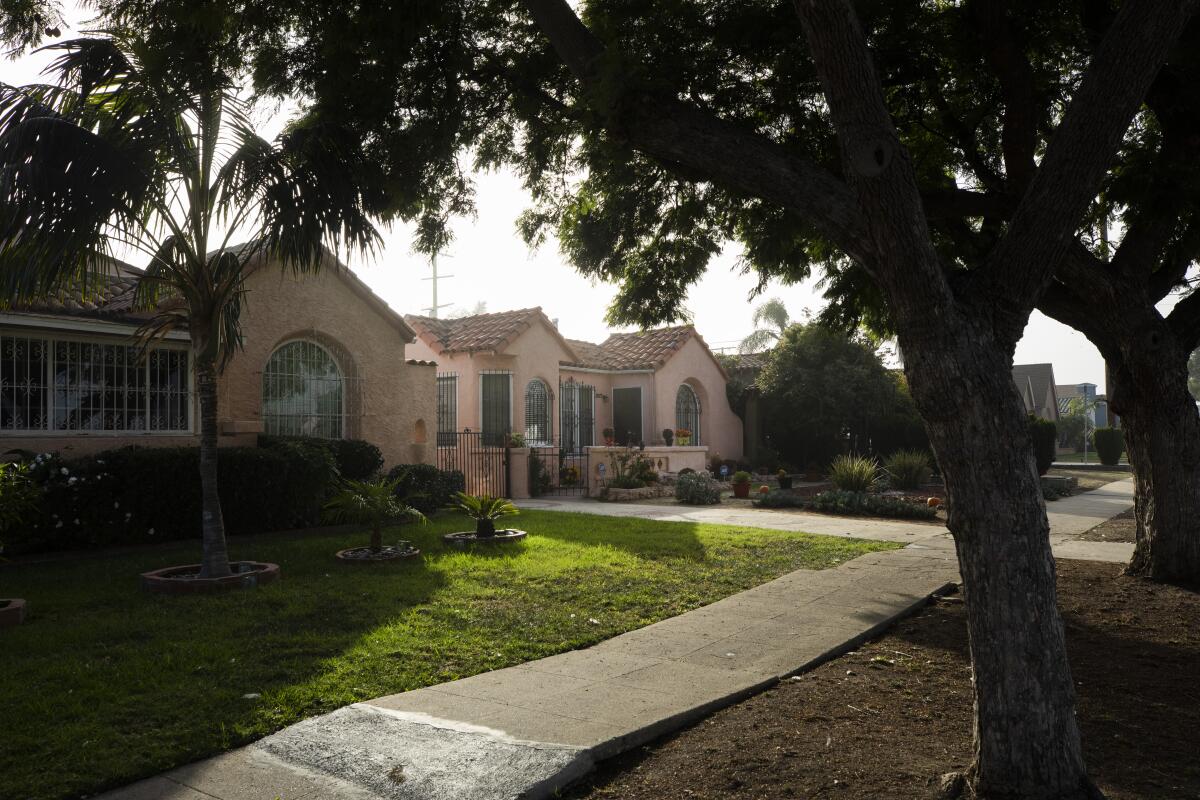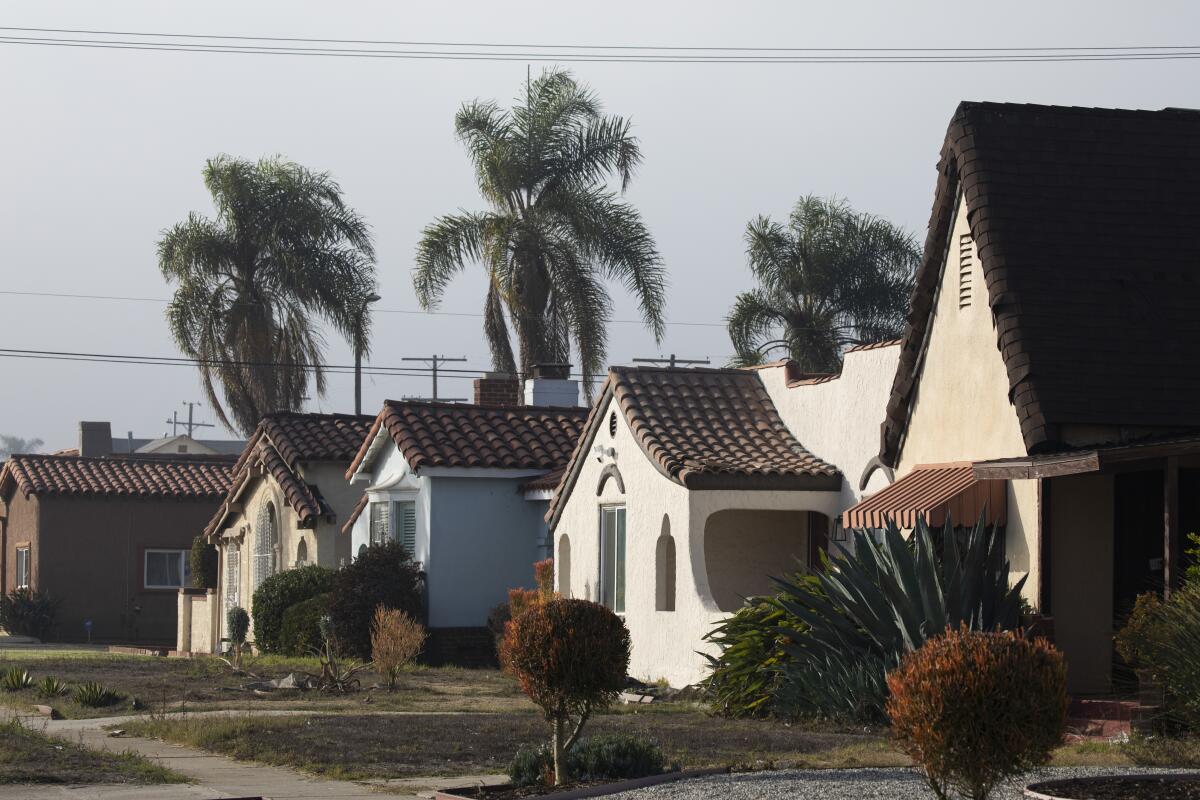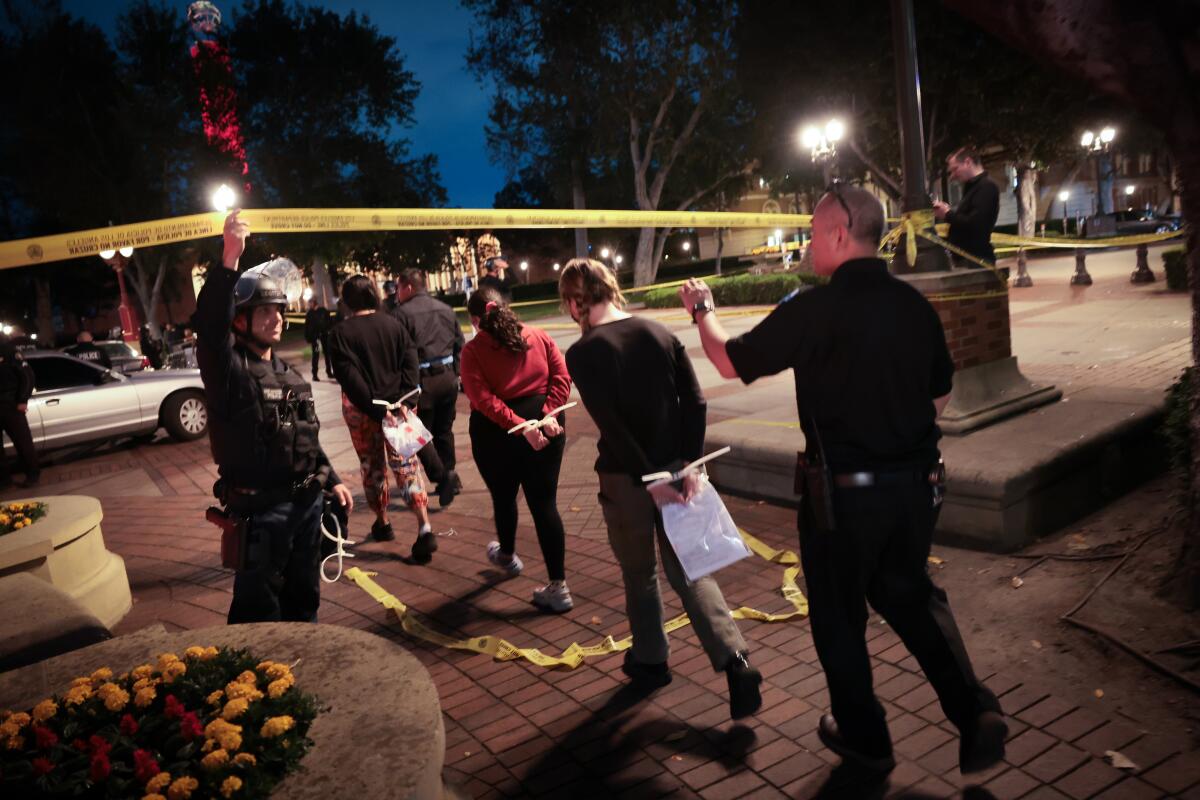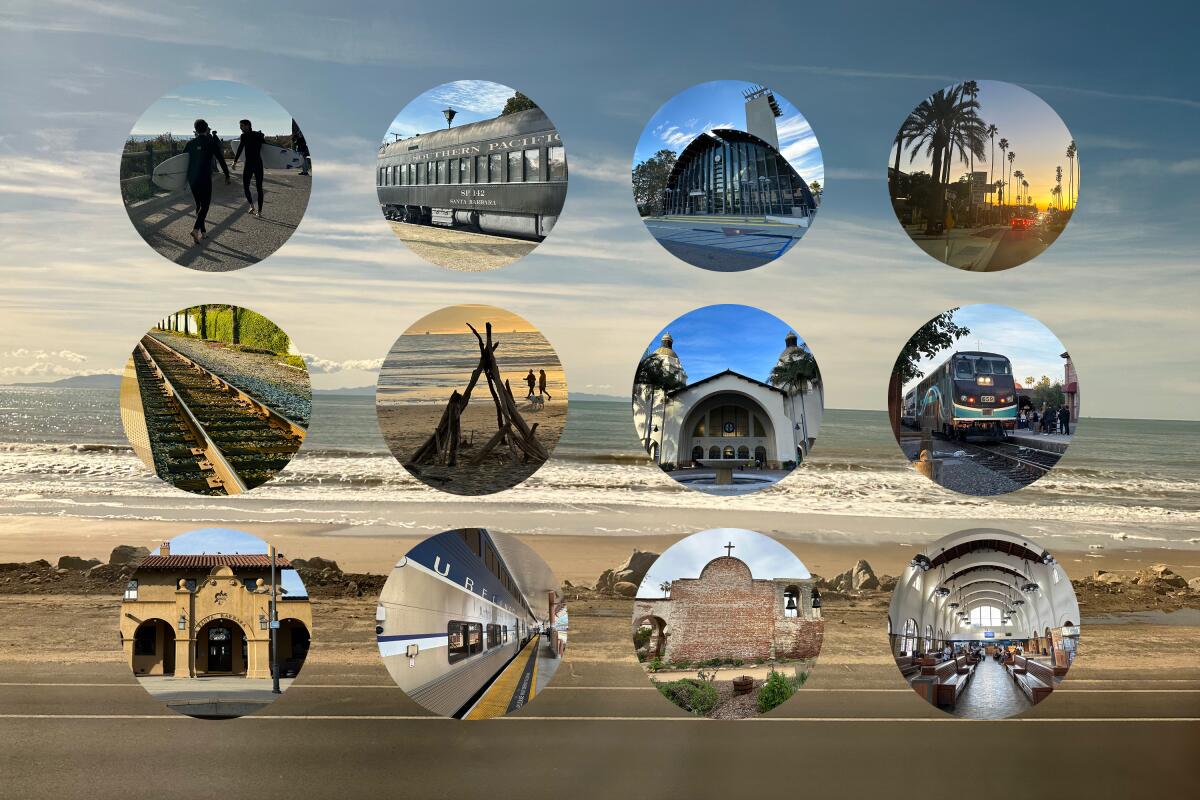California’s ‘duplex bill’ was struck down in a handful of cities. What’s next?

Good morning. It’s Tuesday, April 30. Here’s what you need to know to start your day.
- What does SB 9’s legal smackdown mean for the housing crisis?
- More student loan forgiveness is available
- Seven epic day trips you can take by train from Union Station
- And here’s today’s e-newspaper
You're reading the Essential California newsletter
Our reporters guide you through our biggest news, features and recommendations every morning
You may occasionally receive promotional content from the Los Angeles Times.
Latest decision on the ‘duplex bill’ adds to the cities-vs.-state conflict on the housing crisis
State leaders’ efforts to make it easier to build housing — and ideally more affordable units — have hit a snag in Los Angeles County Superior Court. Last week, a judge deemed as unconstitutional a 2021 law that ended single-family-home-only zoning in five cities (so far).
Senate Bill 9 was dubbed the “duplex bill” because it relaxed restrictions in single-family neighborhoods to allow homeowners to build multi-family developments on their property.
“Legislators reasoned that individual units in duplexes, triplexes and fourplexes would be more affordable than just one house on the land, and that more housing in general would ease affordability pressures,” my colleague Liam Dillon explained this week. “But, citing the costs to build, they did not mandate any units constructed under SB 9 specifically to be set aside for low-income residents.”
Attorneys for the five cities focused on that missing mandate, arguing that the law would disrupt communities without guaranteeing more affordable housing.
In his April 22 ruling, Judge Curtis Kin agreed and deemed the law unconstitutional, writing:
“... the Legislature cannot rely on a potential, eventual decrease in prices resulting from increased housing supply to demonstrate that SB 9 would increase the supply of affordable (i.e. below market-rate) housing.”
David Garcia, policy director for pro-housing organization Up for Growth, said Kin’s ruling was “bizarre.”
“There are a lot of policies aimed at increasing the overall supply of homes to temper rising rents and home prices that are not explicitly making deed-restricted, government-financed projects,” he told me. “By that interpretation, we would be hard-pressed to find a lot of reforms that would live up to that standard.”
For now, the ruling applies to the five cities that signed on to challenge SB9 in court: Redondo Beach, Carson, Torrance, Whittier and Del Mar.
But that could change, Liam reported.

“If his ruling is appealed and upheld, it would affect 121 communities known as charter cities, including Los Angeles, San Diego and San Francisco, that have greater autonomy under state law,” he wrote.
It’s up to Atty. Gen. Rob Bonta to appeal (TBD). Lawmakers might also amend the legislation to mandate affordable housing.
A challenge to the ‘California Dream’ (but not a new idea)
The SB 9 decision is the latest skirmish in the cities-vs.-state conflict over efforts to boost housing and make homeownership more attainable for millions of Californians.
Some cities have pushed back against state laws and mandates to create more affordable housing, arguing that different housing structures would negatively affect neighborhood character.
That’s because SB 9 challenged a long-standing symbol for ideal housing in the Golden State, Liam wrote:
“The lifestyle afforded by owning a suburban single-family home with a backyard and barbecue has long been mythologized as part of the ‘California Dream.’ Allowing multiple units to be built on parcels previously reserved only for single-family homes departs from that vision.”
Garcia said an underlying tension is the perception that everyone wants or can have that quarter-acre-lot lifestyle. But given that the majority of residential properties and lots in the state are zoned for single-family housing, there’s a dearth of affordable alternatives.
“This is about creating more choice for the household, particularly at price points that more people can afford,” Garcia said.
These aren’t novel choices, he noted. Toward the middle of the last century, many growing neighborhoods across the state featured duplexes, bungalow courts and small apartment buildings sprinkled in with single-family homes. But then more cities passed zoning laws to restrict that structural diversity.
“This stuff used to be legal; it used to be uncontroversial,” Garcia said. “[California] is just allowing some of these different housing types, which serve different household sizes and incomes, to be built again today.”
‘One small step’ to address our housing crisis
For Margot Kushel, a professor of medicine and director of the Benioff Homelessness and Housing Initiative at UC San Francisco, SB 9 “is part and parcel with the need to recognize that our state has done a terrible job at creating the housing that we need for all Californians.”
She said SB 9 is only a “slight tweak” to existing zoning laws. And it doesn’t require that any units constructed by homeowners be held to an affordability standard. So that’s far from enough to fix the state’s affordable housing shortage and interlinked homelessness crisis, Kushel explained.
“Is it one small step that we need to take to ease the pressure on the housing markets? Yes,” she said. “It’s discouraging that even really minor corrections to zoning laws meet with such resistance.”
Read more reporting from Liam on the SB 9 decision.
Today’s top stories
Campus protests
- Calling police on campus protests shows that college presidents haven’t learned a thing since the 1960s, columnist Michael Hiltzik writes.
- Commencement speakers launch a boycott of USC satellite graduation ceremonies.
- University protests dominate media coverage, obscuring the true horror of the Gaza war.
- Pro-Palestinian protesters set up encampments at several more California campuses.
- Police were in a tense standoff with Gaza war protesters Monday night at Cal Poly Humboldt, which has been closed for nearly a week with some students occupying campus buildings.
More big stories
- Monthly payments of $1,000 could get thousands of homeless people off the streets, researchers say.
- Former L.A. Mayor Antonio Villaraigosa is joining the cryptocurrency company Coinbase.
- Hollywood’s crew union negotiations have gone well so far. Now the hard part begins.
- Gérard Depardieu is reportedly in custody for questioning on sexual assault allegations.
- A lawsuit against Kevin de León could be dismissed next month, a judge rules.
- More student loan forgiveness is available, but the deadline for qualifying is Tuesday.
- A security guard was shot near the Encino home of the Weeknd’s co-manager in a possible attempted home invasion.
- California’s population increased last year for the first time since 2020.
- Will AI deepfakes and robocalls upset the 2024 election?
Get unlimited access to the Los Angeles Times. Subscribe here.
Commentary and opinions
- LZ Granderson: College costs are beyond absurd. Here’s a way to rein them in.
- Anita Chabria: This ain’t N.Y. and other reasons Harvey Weinstein won’t win in California court.
Today’s great reads
California climbers train for Mt. Everest from the comfort of their own beds. Graham Cooper sleeps with his head in a bag. Not just any bag. This one has a hose attached to a motor that slowly lowers the oxygen level to mimic, as faithfully as possible, the agonies of fitful sleep at extreme altitude: headaches, dry mouth, cerebral malaise.
Other great reads
- Yikes! You’re stuck in a situationship. When to stick around or get out.
How can we make this newsletter more useful? Send comments to [email protected].
For your downtime
Going out
- 🚆Seven epic day trips you can take by train from Union Station.
- 🎭 Need a little hope? Geffen Playhouse magic show proves it is more than an illusion.
- 🍰 What is car cake? And why we could all use a slice or two.
Staying in
- 📕 Time travel and surveillance-state paranoia collide in a witty, thought-provoking romance novel.
- 🧑🍳 Here’s a recipe for sticky orange chicken thighs with chile-cucumber salad.
- ✏️ Get our free daily crossword puzzle, sudoku, word search and arcade games.
And finally ... a great photo
Show us your favorite place in California! We’re running low on submissions. Send us photos that scream California and we may feature them in an edition of Essential California.
Today’s great photo is from Times photographer Allen J. Schaben. Relive Stagecoach with this beer-in-a-boot shot and read all about the best, worst and weirdest of the festival
Have a great day, from the Essential California team
Ryan Fonseca, reporter
Defne Karabatur, fellow
Andrew Campa, Sunday reporter
Kevinisha Walker, multiplatform editor and Saturday reporter
Christian Orozco, assistant editor
Stephanie Chavez, deputy metro editor
Karim Doumar, head of newsletters
Check our top stories, topics and the latest articles on latimes.com.
Sign up for Essential California
The most important California stories and recommendations in your inbox every morning.
You may occasionally receive promotional content from the Los Angeles Times.








